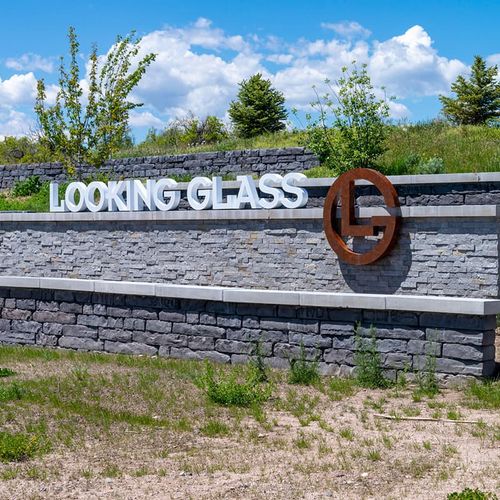TL;DR
Colorado boasts some of the nation's lowest property taxes, averaging just 0.49% of market value, a stark contrast to the national 1.1%. While county and neighborhood specifics cause variations, new builds often incur higher taxes due to metro district fees for infrastructure, a key factor for homeowners to understand.
---
After helping countless families relocate to Colorado, one of the most common questions we receive is about our property taxes. Colorado property taxes are often touted as some of the lowest in the country, and for good reason—our average effective property tax rate is around 0.49% of a home's market value, significantly less than the nationwide average of 1.1%. This means a $600,000 home might only incur about $3,000 in annual taxes, offering substantial savings, especially for those moving from states like California, Texas, or New York.
In our experience as the Mile High Property Brothers, we've seen firsthand how this can be a pleasant surprise for new residents, often offsetting higher home prices. We dive deep into these numbers daily, comparing different areas and helping clients understand their potential financial landscape. This isn't just about statistics; it's about real savings that impact your monthly budget and overall homeownership experience.
But how exactly are these “too good to be true” Colorado property taxes calculated? What are the actual rates across the Denver Metro counties, and why do some new build communities have surprisingly higher bills? We'll break down the full process, reveal the county-by-county variations, and explain the crucial difference between new and older homes.

How Colorado Property Taxes Work: The 3-Step Breakdown
Understanding how Colorado property taxes work is simpler than you might think, despite the intricate calculations behind the scenes. We break it down into a straightforward three-step process to help our clients grasp their annual tax obligations.
Step 1: Market Value Assessment
First, the county assessor determines the market value of your home. This isn't based on what you paid for it, but rather what it would realistically sell for on the open market at the time of assessment. This valuation is a critical starting point for your tax bill.
Step 2: Assessed Value Calculation
Next, the county takes a specific percentage of that market value to arrive at your home's assessed value. While the exact methodology for this percentage is complex and not essential for homeowners to understand, the key takeaway is that your assessed value will always be a fraction of your home's market value. This fractional value is what the subsequent tax rates will be applied to.
Step 3: Applying the Mill Levy
Finally, a mill levy is applied to your home's assessed value. A mill levy is a cumulative rate that encompasses all the local taxes supporting essential community services. These include funding for schools, fire departments, police stations, road infrastructure, open space maintenance, and other vital amenities that make a community livable. Once all these local taxes are accounted for, they create the effective tax rate for your home, determining your total annual property tax bill.
Colorado Property Tax Rates Across Denver Metro Counties
While Colorado's average property tax rate is impressively low, it's crucial to remember that rates vary significantly by county and even by neighborhood within those counties. We've compiled the typical effective tax rates for some of the largest and most sought-after counties in the Denver metro area, helping you understand where you might find the lowest property taxes in Colorado.
- Jefferson County: At an effective tax rate of approximately 0.66% of market value, Jefferson County covers a vast area from south Broomfield down through Arvada, Wheat Ridge, Golden, Lakewood, and extending into the foothills like Evergreen and Aspen Park. If you're looking at homes in these diverse areas, anticipate a rate around this mark.
- Adams County: Directly north of Denver, Adams County boasts an effective tax rate of about 0.6% of market value. This includes areas stretching into Thornton, Northglenn, and east towards Brighton. Essentially, if you're considering the north to northeast Denver area, this is your general expectation.
- Denver County: Consistently offering the lowest and most predictable rates, Denver County sits at about 0.48% of market value. This covers the heart of Denver, including popular neighborhoods like Highlands, Berkeley, and Sunnyside, as well as downtown and South Denver. If minimizing your annual property tax bill is a top priority, Denver is often the best bet.
- Arapahoe County: This large county sees rates ranging from 0.55% to 0.62% of market value. Arapahoe County includes areas like Littleton, Englewood, Centennial, and central to southeast Aurora. Many new build communities, such as Southshore, Blackstone, and Talon's Reach, fall within Arapahoe County, and as we'll discuss, these can be exceptions to the average county rates. For more on expanding communities, you might find insights in Denver Is Transforming: 4 Mega Projects You NEED To See.
- Douglas County: Similar to Arapahoe, Douglas County's rates typically range from 0.55% to 0.64% of market value. This county is home to Highlands Ranch, Parker, Castle Rock, Castle Pines, and Lone Tree. Douglas County, particularly in areas like Castle Rock, has a high concentration of new builds, which significantly impacts the actual property tax bill for many homeowners.
Why New Build Property Taxes in Colorado Can Be Higher
This is where many people get tripped up, expecting uniform Colorado property taxes across a county only to find a new build community with a bill almost double that of an older home just a few streets away. The reason boils down to those mill levies we discussed earlier, specifically related to what are known as metro district taxes.
The Role of Metro Districts
When new neighborhoods are developed, they require substantial new infrastructure: roads, water lines, sewer systems, new schools, fire departments, police stations, libraries, and other community buildings. These are significant investments, and the tax dollars to fund them need to be recouped. Metro districts are essentially additional mill levies levied on new homeowners within these communities to pay for this new infrastructure.
As we always tell our clients, if you're buying in a new build neighborhood, regardless of the county, you should budget for a property tax rate anywhere from 1% to 1.2% of your home's fair market value. For example, if you're purchasing a million-dollar home in a new community, we advise anticipating an annual property tax bill of $10,000 to $12,000.
New Builds vs. Older Homes
This significantly higher rate for new builds contrasts sharply with older homes, even those in the same county or just a couple of blocks away. Older, more established neighborhoods already have their infrastructure in place and paid for, meaning they don't carry the additional metro district tax burden. This is a crucial distinction if you're prioritizing lower annual property tax costs.
We recently had clients looking in Castle Rock, and the property tax conversation was truly eye-opening for them, coming from New Jersey where taxes are astronomical. Even the highest new build property taxes Colorado has to offer are often still less than what people pay in some East Coast states. In areas like Parker, where new communities are constantly emerging, understanding this distinction is vital. You can learn more about these expanding areas in Parker Colorado Is Exploding: 3 New Communities You Need to See 2!.
Planning for Property Taxes
One common question is whether metro district taxes ever fall off. While many communities, like Montaigne in Castle Rock, have a set period (e.g., 5 years) after which these taxes are supposed to decrease, our pro tip is this: "plan for paying that 1% forever." We advise budgeting for the higher rate upfront. If the taxes eventually drop off and your bill is substantially lower, then it's a fantastic bonus. But it's always better to be financially prepared for the higher end.
Colorado Compared: A Tax Haven for Many
The truth about Colorado property taxes is that they are indeed much lower than what many people expect, especially those relocating from states with high tax burdens. This low tax rate serves as a significant offset to Colorado's often higher home prices. We've seen countless clients surprised (in a good way!) when they crunch the numbers. "Man, I've got a much more expensive home out here, but my payment is less than it was out there because of the property tax situation," is a common sentiment we hear.
This monthly savings can be substantial, making homeownership in Colorado more accessible and attractive despite the initial sticker shock of home prices. However, as we've highlighted, there's a considerable difference between the tax bills for older, established homes and newer builds due to metro district fees. Being aware of this distinction from the start helps you make informed decisions when home shopping, ensuring there are no surprises.
Navigating the nuances of real estate in a new state can be challenging. We often advise our clients to be aware of potential pitfalls beyond just property taxes. If you're considering a move, we recommend checking out 5 Big Mistakes People Make Moving to Colorado to ensure a smoother transition.
Key Takeaways
- Colorado Property Taxes are Significantly Lower than the National Average: With an average effective tax rate of about 0.49% of market value, compared to the national 1.1%, homeowners here can see substantial annual savings. For instance, a $600,000 home typically incurs only around $3,000 in property taxes, offering considerable relief compared to states like California or New York.
- Calculation Involves Market Value, Assessed Value, and Mill Levy: Your annual tax bill is determined by the county assessor's market valuation, which is then fractioned into an assessed value, and finally multiplied by the local mill levy, covering essential community services like schools, fire departments, and road infrastructure.
- Denver County Offers the Lowest and Most Predictable Rates: At approximately 0.48% of market value, Denver consistently has the most favorable property tax rates in the metro area, making it an attractive option for those prioritizing lower annual costs and stable tax predictability.
- New Builds Often Incur Higher Property Taxes Due to Metro Districts: Properties in newer communities, especially in Douglas and Arapahoe Counties, can see rates up to 1% to 1.2% of market value. This is due to additional "metro district" taxes funding new infrastructure, which can sometimes phase out after 5-10 years, but it's wise to budget for the higher rate indefinitely.
- Older, Established Homes Generally Have Lower Tax Burdens: Homes in more mature neighborhoods often avoid the metro district taxes found in new developments, resulting in significantly lower annual property tax bills, sometimes half that of a comparable new build nearby, making them a good option for tax-conscious buyers.
Frequently Asked Questions (FAQ)
Q: How are property taxes calculated in Colorado?
A: Colorado property taxes are calculated in a three-step process. First, the county assessor determines your home's market value. Second, a percentage of that market value is taken to establish the assessed value. Finally, a "mill levy" (a cumulative rate for local services like schools and fire departments) is applied to the assessed value to determine your total bill. We simplify this process for our clients to ensure they understand their exact liability.
Q: Which Colorado counties have the lowest property tax rates?
A: Based on our analysis and the video's insights, Denver County generally offers the lowest and most predictable property tax rates in the Denver metro area, typically around 0.48% of your home's market value. Other counties like Jefferson (0.66%) and Adams (0.6%) are higher, while Arapahoe and Douglas Counties range from 0.55% to 0.64%, with new builds often pushing these rates higher.
Q: Why are property taxes higher for new builds in Colorado?
A: Property taxes are often significantly higher for new builds due to "metro district taxes," which are essentially additional mill levies. These taxes fund the new infrastructure required for developing communities—roads, water, sewer, schools, and other amenities. As new homeowners, you contribute to recouping these development costs, which can increase your effective tax rate to 1% or even 1.2% of your home's market value, though these can sometimes phase out over several years.
Q: What is a mill levy and how does it affect Colorado property taxes?
A: A mill levy is a crucial component of Colorado property taxes. It represents a culmination of various local taxes that fund essential community services such as schools, fire departments, police stations, road infrastructure, and open space maintenance. This rate is applied to your home's assessed value (a fraction of its market value) to calculate a significant portion of your total annual property tax bill. Higher mill levies mean higher taxes.
Q: What is the average property tax rate in Colorado?
A: According to SmartAsset.com and our findings, the average effective property tax rate in Colorado is approximately 0.49% of a home's market value. This is considerably lower than the national average of about 1.1%. However, it's important to remember that this is an average, and actual rates can vary significantly based on your specific county, neighborhood, and whether your home is a new build or an older, established property.
---
Watch the Full Video
For more insights, watch the complete video: Colorado Property Taxes: Too Good To Be True?
---
Making Your Move Easier
Moving forward does not have to be overwhelming. With the right guidance and support, you can navigate this journey smoothly. Eli Schmidt and Will Grimes are ready to help you every step of the way.
Here's how to get in touch:
📧 Email: [email protected]
📞 Phone: 720-419-0224
💻 YouTube: Living in Denver - The Mile High Property Brothers


